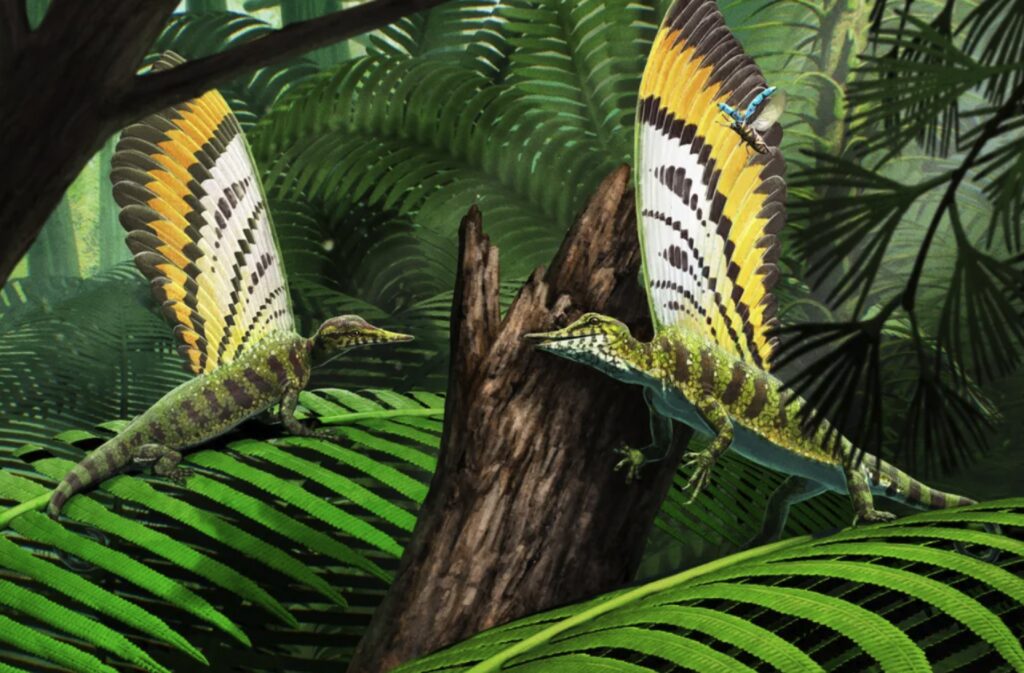
A study published in the journal Nature reveals that the ancient reptile Mirasaura grauvogeli, dating back approximately 247 million years, utilized a unique fan-like structure on its back for communication. This discovery challenges previous assumptions that these appendages were feathers, suggesting instead that they were an unusual form of skin.
Researchers from the State Museum of Natural History in Stuttgart, Germany, reexamined a fossil of Mirasaura, which was originally discovered in 1939 and acquired by the museum in 2019. Their analysis indicates that the appendages, preserved with pigment-carrying particles known as melanosomes, exhibit characteristics more akin to bird skin than reptilian features.
Insights into Triassic Reptiles
The study authors propose that these distinctive structures, described as “distinctly corrugated,” functioned as a communication tool among the reptiles. Unlike traditional feathers or scales, the appendages were flexible, similar to cardboard, providing a fascinating glimpse into the evolutionary paths of vertebrates.
Richard Prum, an evolutionary biologist at Yale University, commented on the significance of this finding, stating, “This evidence reveals that vertebrate skin has evolutionary possibilities that are weirder than might be easily imagined.” He emphasized that Mirasaura illustrates the diversity of structures that reptiles have evolved throughout their history.
The research team also focused on Longisquama insignis, another reptile from the same era that displayed similar feather-like features. Previous studies had difficulty interpreting the fossil due to its poor preservation. However, the new analysis suggests that both Mirasaura and Longisquama belong to the drepanosaur family, a peculiar group of Triassic reptiles known colloquially as “monkey lizards.”
Revisiting Fossil Discoveries
Drepanosaurs are characterized by elongated, bird-like skulls and chameleon-like bodies, indicating they likely adapted to a tree-dwelling lifestyle. If the findings of this study are confirmed, it may mean that these reptiles possessed elaborate, helical structures extending from their backs, enhancing our understanding of their biology and behavior.
The methods employed by the researchers underscore the importance of revisiting older fossils with modern techniques. By reconstructing the skeletal anatomy of these ancient creatures, scientists gain new insights into their physical characteristics and potential behaviors.
This research exemplifies how advances in technology and methodology can lead to groundbreaking discoveries in paleontology. As scientists continue to uncover details about prehistoric life, the complexities of reptilian evolution become increasingly apparent, revealing a world that was likely even stranger than previously imagined.






